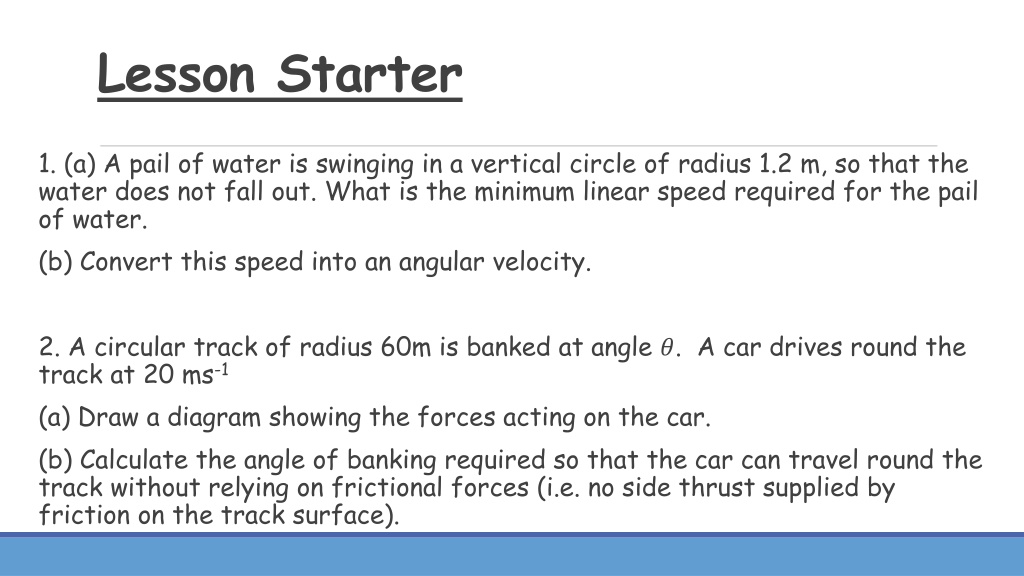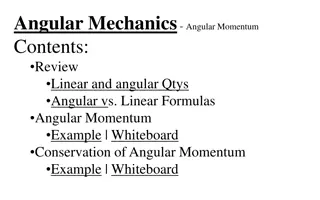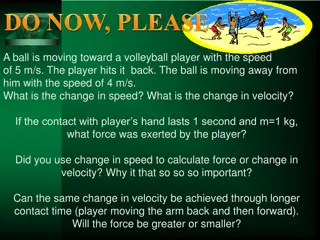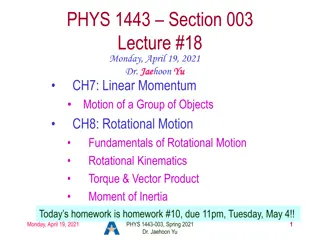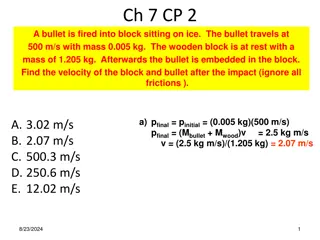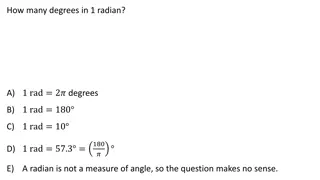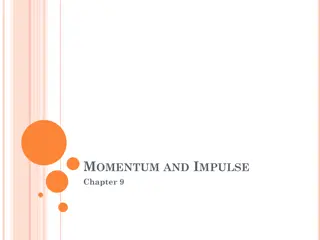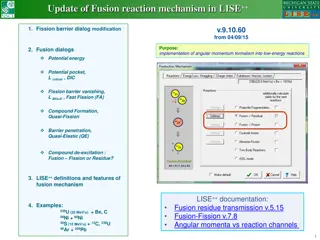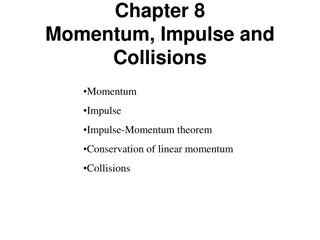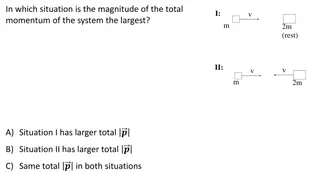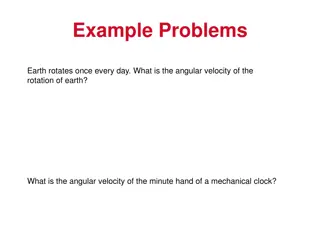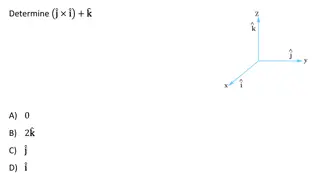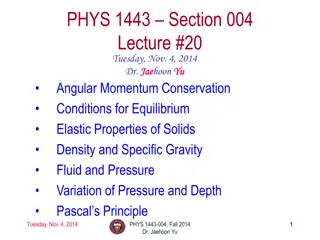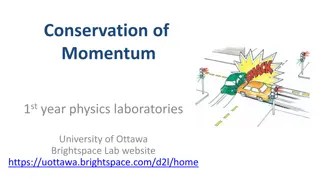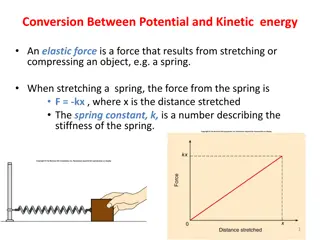Understanding Angular Momentum in Physics
Learn about the concept of angular momentum in physics through practical examples and explanations. Explore how angular momentum is conserved in rotating bodies and how it impacts various sports activities. Discover the relationships between moment of inertia, angular velocity, and conservation of angular momentum.
Download Presentation

Please find below an Image/Link to download the presentation.
The content on the website is provided AS IS for your information and personal use only. It may not be sold, licensed, or shared on other websites without obtaining consent from the author. Download presentation by click this link. If you encounter any issues during the download, it is possible that the publisher has removed the file from their server.
E N D
Presentation Transcript
Lesson Starter 1. (a) A pail of water is swinging in a vertical circle of radius 1.2 m, so that the water does not fall out. What is the minimum linear speed required for the pail of water. (b) Convert this speed into an angular velocity. 2. A circular track of radius 60m is banked at angle ?. A car drives round the track at 20 ms-1 (a) Draw a diagram showing the forces acting on the car. (b) Calculate the angle of banking required so that the car can travel round the track without relying on frictional forces (i.e. no side thrust supplied by friction on the track surface).
Angular Momentum CFE ADVANCED HIGHER PHYSICS
Copy into notes jotter: Angular Momentum Angular momentum, L, of a body rotating with moment of interia I and angular velocity is given by the equation: ? = ?? Where L is measured in kg m2s-1 We can sate that the angular momentum of a rotating rigid body is conserved in the absence of external torques.
Copy into notes jotter: Angular Momentum To calculate the angular momentum of an object at a point, we can substitute ? = ??2 and =? get: ? into the angular momentum equation to ? = ??2? and ? = ???
Copy into notes jotter: Conservation of angular momentum Since angular momentum depends on the moment of inertia of an object, then it depends of the distribution of mass about the axis. If moment of inertia increases, angular velocity must decrease to keep the angular momentum constant and vice versa.
Angular momentum in sports Gymnasts, snowboarders, divers and acrobats all use this concept of conservation of momentum. Standing position = large moment of inertia, so small angular velocity. Tucked position = small moment of inertia, so large angular velocity.
Copy into notes jotter: Example
Copy into notes jotter: Answer Angular momentum is always conserved, so angular momentum before must equal angular momentum after. ??= ?? ????= ???? 4.7 ? 7 = 1.8 ?? ??=4.7 ? 7 ??= 18 ??? ? 1 1.8
Everyday examples Ice skaters also use this concept when spinning:
Everyday examples The mars exploration rover s angular velocity was reduce by having extended arms with masses attached to them, which, when extended, increases the moment of inertia, so decreases the angular velocity.
Copy into notes jotter: Rotational Kinetic Energy There are also expressions for calculating work done and kinetic energy in rotational motion, that are again analogous to expressions used to describe linear motion. These are: ? = ?? for work done and ??=1 2??2 ??? ?????????? ??????? ??????.
Copy into notes jotter: Total kinetic Energy ? =1 energy, if the object is not moving linearly also. If the object is also moving linearly, then the total kinetic energy is equal to: 2??2 should be used to calculate the total rotational kinetic ????? ??= ?????????? ??+ ????????????? ?? ????? ??=1 2??2+1 2??2
Copy into notes jotter: Example 1 A solid sphere of radius and mass has moment of inertia about any axis though its centre. Calculate the translational and rotational kinetic energies of a sphere of mass 0.40 kg and radius 20 cm rolling (without slipping) along a horizontal surface with translational speed 5.0ms-1
Copy into notes jotter: Answer The translational Ek is: ????????????? ??=1 =1 2x 0.4 x 0.52 = 5.0J 2mv2
Copy into notes jotter: Answer To find the rotational Ek, we need to find the angular speed of the object first: ? =? ? 5.0 0.20 = = 25 ??? ? 1 ??=1 =1 2??2 2?2 5??2? 252 =1 5? 0.40?0.202? 252= ??
